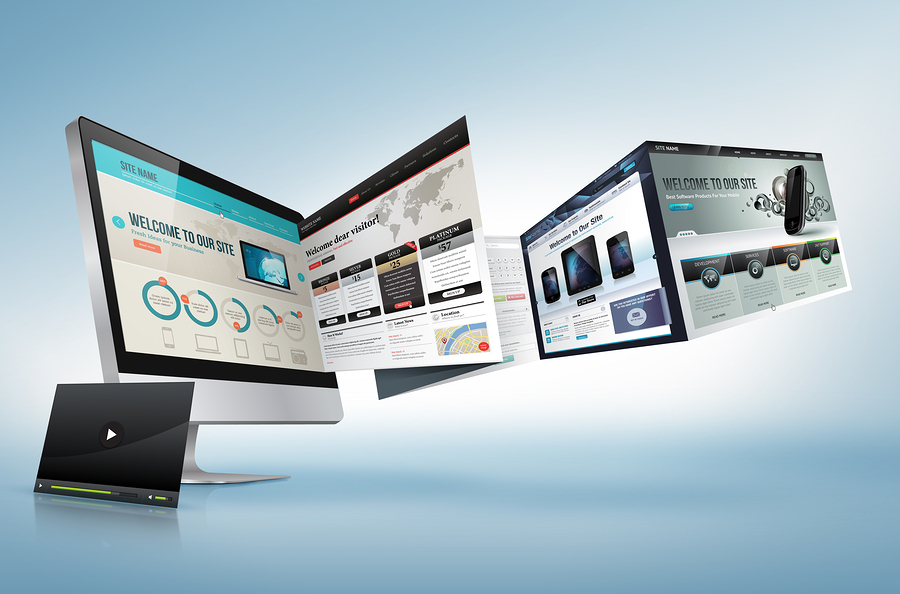Modern Internet Site Style That Captures Interest and Converts
In a progressively electronic landscape, contemporary website design has become an essential variable in recording customer attention and driving conversions. By tactically employing aesthetic hierarchy, responsive layouts, and engaging interactive aspects, designers can create experiences that not just draw in visitors but also assist in purposeful interactions. Reliable call-to-action methods play a vital role in guiding individuals toward preferred end results. As we check out these important elements, it comes to be clear that understanding their interaction can considerably impact an internet site's performance and user satisfaction. What are the vital elements that really make a distinction?
Importance of Visual Power Structure
Aesthetic hierarchy is an essential aspect in internet site style, as it overviews users' attention and improves their overall experience. By strategically arranging web content, designers can direct individuals to the most essential details first, therefore increasing engagement and enhancing usability.
Incorporating a sensible flow in web content setup is important; for example, putting the most crucial information at the top of a web page cultivates prompt acknowledgment. Additionally, consistent use of typography, such as differing font sizes and designs, aids establish a clear content framework. This company not just aids in navigation however likewise develops depend on, as customers feel extra comfy when they can quickly locate what they are trying to find.
Inevitably, a well-executed visual hierarchy not just boosts aesthetic appeal yet also substantially affects customer habits. By focusing on vital aspects and making certain a smooth experience, developers can effectively convert site visitors right into consumers, strengthening the significance of this fundamental design concept in contemporary web site advancement.
Responsive Design for All Instruments
Producing a seamless experience across numerous devices is important in today's electronic landscape, where customers gain access to web sites from desktops, smart devices, and tablets alike. Receptive style is a vital method that ensures sites adapt fluidly to different display resolutions, orientations, and dimensions. By utilizing versatile grids, photos, and CSS media inquiries, developers can create layouts that preserve visual integrity and capability, no matter of the tool being used.
The importance of receptive design extends past aesthetic appeals; it directly affects customer engagement and conversion prices. A site that works well on all tools urges longer gos to and decreases bounce prices, as users are more probable to interact with content that is very easy to navigate. Search engines, particularly Google, focus on mobile-friendly sites in their positions, making receptive style an important part of search engine optimization (SEO)
Integrating receptive design not just improves customer experience yet additionally enhances the advancement process. By creating a solitary site that works across devices, companies can conserve time and resources compared to establishing separate mobile and desktop computer versions. Ultimately, responsive layout is a fundamental strategy for contemporary internet site layout, making certain accessibility and complete satisfaction for all users, no matter of their tool.
Engaging Interactive Components
While a receptive layout prepares for a practical internet site, incorporating interesting interactive components is critical for recording customer attention and discover this info here fostering deeper links. Website Design. Interactive components, such as animations, tests, and clickable infographics, produce a much more dynamic individual experience, motivating site visitors to spend more time on the website
Including interactive features can additionally lead customers via complicated details, making it simpler to absorb material. Interactive sliders can show item variations, while ingrained videos can offer demos or testimonials that reverberate more than fixed images or message. Gamification methods, like benefits for involving or completing tasks with web content, can enhance customer inspiration and retention.
Reliable usage of interactive components not only enhances the customer experience yet can likewise result in higher conversion prices. By making communications satisfying and insightful, services can cultivate a feeling of commitment and trust with their audience. It is important to balance interactivity with efficiency; overly complex functions might prevent website speed, negatively impacting customer fulfillment. Inevitably, integrating properly designed interactive components can substantially raise a web site's effectiveness, driving interaction and conversions in today's competitive electronic landscape.
Structured Navigation Practices
Reliable navigation is a cornerstone of any effective internet site, news as it directly influences customer experience and content accessibility. Structured navigation methods ensure that individuals can quickly find details, boosting their communication with the website. A well-structured navigating food selection need to be intuitive and simple, typically featuring a restricted variety of key classifications to avoid overwhelming site visitors.
To achieve streamlined navigation, designers should focus on an ordered framework that realistically organizes content. Executing breadcrumb routes can offer individuals with context about their present location within the website, permitting for seamless backtracking. Additionally, using drop-down food selections can efficiently save room while still supplying accessibility to subcategories.
Receptive design is critical, as navigation ought to be useful throughout all devices (Website Design). Mobile users, specifically, gain from touch-friendly food selections and retractable areas that maintain use without endangering aesthetic appeals

Reliable Call-to-Action Strategies
A well-crafted call-to-action (CTA) is important for guiding customers toward desired end results on a web site, as it motivates them to engage with material or make an acquisition. To maximize their effectiveness, CTAs must be clear, engaging, and purposefully put throughout the site.
First, use action-oriented find here language that communicates necessity or value, such as "Get going," "Sign up with Now," or "Claim Your Price cut." This language not just encourages individuals yet additionally sets clear expectations about the following actions.
2nd, consider style elements; CTAs must attract attention aesthetically via contrasting shades, sufficient whitespace, and noticeable positioning. A button that is simple to see and click increases the probability of customer interaction.
Additionally, personalizing CTAs based upon user actions or demographics can substantially improve interaction. Customized messages reverberate much more with individuals, driving higher conversion prices.

Verdict
In final thought, modern-day internet site design highlights the combination of aesthetic power structure, receptive designs, engaging interactive components, streamlined navigating, and reliable call-to-action strategies. These components jointly boost individual experience, making certain that visitors stay involved and inspired to explore web content additionally. By prioritizing these style principles, companies can considerably improve individual retention and conversion prices, inevitably leading to higher success in the digital landscape. The continual evolution of internet layout highlights its crucial role in reliable online interaction and advertising.
In a significantly electronic landscape, modern web site layout has emerged as a crucial aspect in recording individual focus and driving conversions.Visual hierarchy is an essential aspect in internet site design, as it overviews users' interest and enhances their overall experience.The significance of receptive style expands beyond visual appeals; it directly influences user interaction and conversion rates.Including receptive style not only enhances customer experience but additionally improves the development process. Eventually, receptive style is a fundamental method for modern-day internet site design, making sure access and satisfaction for all users, regardless of their tool.
 Luke Perry Then & Now!
Luke Perry Then & Now! Alicia Silverstone Then & Now!
Alicia Silverstone Then & Now! Bug Hall Then & Now!
Bug Hall Then & Now! Marques Houston Then & Now!
Marques Houston Then & Now! Danica McKellar Then & Now!
Danica McKellar Then & Now!